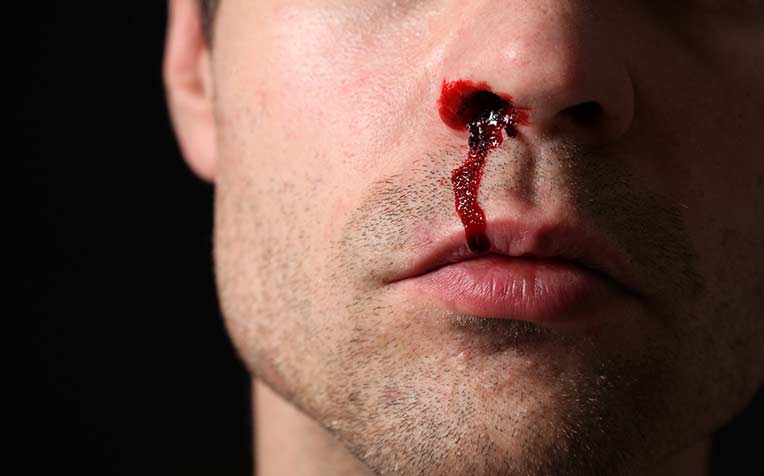
Bleeding from a broken nose can be stopped by a variety of ways which include pinching the soft part of the nose, above the nostrils for 15mins, and using an ice pack over the nose bridge.
"Direct trauma and force to the nose can lead to a minor nasal contusion of the soft tissue around the nose or it can also lead to nasal bone fractures and fracture of the stabilizing structure within the nose (nasal septum) leading to nasal deviation and difficulty breathing," says Dr Terence Goh, Visiting Consultant, Department of Plastic, Reconstructive & Aesthetic Surgery, Singapore General Hospital (SGH), a member of the SingHealth group.
How to stop nose bleed after nasal fracture
A nasal fracture or contusion often leads to nose bleeding (epistaxis). In the event of a nose bleed, do the following to stop the bleeding:
- Sit down and firmly pinch the soft part of your nose just above the nostrils for 15 minutes.
- Lean forward and breathe through your mouth so that the blood drips in front and not down the back of your throat. If the blood drips backwards, just swallow it and you will be fine.
- An ice pack over the nose bridge can help.
- Keeping your head elevated rather than lying down will help reduce the pressure and discourage further bleeding.
What to do after the bleeding has stopped
Once the bleeding has stopped, do seek medical attention early. See a plastic surgeon early after a nose injury when you have epistaxis or a nasal deviation.
In the event of a broken nasal bone, surgery may be needed early to prevent the bones from healing in a deviated manner. Septal hematoma is an emergency when there is a blood clot trapped around the cartilage of the nose.
Who can't have reconstructive rhinoplasty after trauma? Is there an age limit?
There is no age limit for treatment of nasal deformities after facial trauma. However, special care and considerations will be taken for patients in the extreme of ages. In the young patients who have not reached skeletal maturity, the objective will be for more conservative measures and for elderly patients, the treatment will have to be done with consideration of their underlying medical problems e.g. cardiac disease and other medical comorbidities.
How does a surgeon accurately assess a broken nose condition and what are the available treatments? Dr Goh answers these questions next.
Ref: N18
Contributed by
















 Get it on Google Play
Get it on Google Play